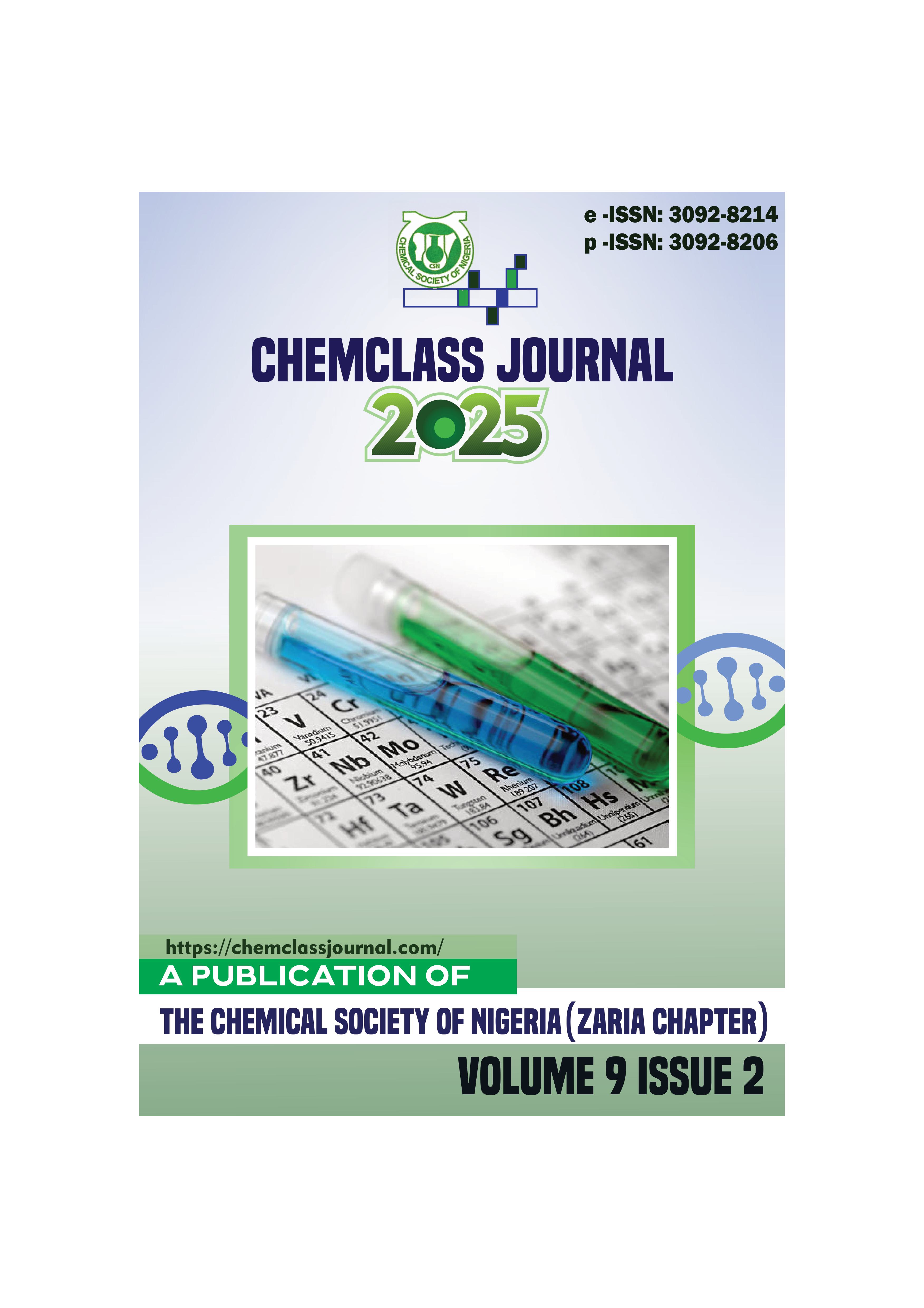GC-MS Profile and Antibacterial Evaluation of the Ethanolic Extracts of Banana and Sweet Potato Peels
DOI:
https://doi.org/10.33003/chemclass-2025-0902/187Keywords:
Antibacteria , Antioxidant , Banana, GCMS, PotatoesAbstract
Banana (Musa spp.) and sweet potato (Ipomoea batatas) peels are often discarded during food processing,
yet they contain a wealth of bioactive compounds with promising health and industrial benefits. This study
set out to explore the chemical composition and biological potential of these underutilized byproducts. The
peels were first subjected to ethanol extraction using a Soxhlet apparatus. To better understand the
chemical profiles of the extracts, Gas Chromatography–Mass Spectrometry (GC-MS) and Fourier
Transform Infrared Spectroscopy (FTIR) were employed. The GC-MS analysis showed that banana peel
extract was particularly rich in cis-oleic acid (24.85%) and resorcinol (19.02%), while sweet potato peel
extract had a higher concentration of palmitic acid (39.66%) and pyrogallol (17.94%). FTIR spectroscopy
supported these findings, revealing prominent O–H stretching bands around 3300–3400 cm⁻¹, C=O
stretching peaks near 1700 cm⁻¹, and C–O vibrations between 1000–1300 cm⁻¹, all indicative of phenolic
and fatty acid structures. Antioxidant assays revealed that banana peel extract exhibited stronger free
radical scavenging activity, particularly at lower concentrations. On the other hand, sweet potato peel
extract demonstrated notable antibacterial effects, especially against Pseudomonas aeruginosa. These
findings therefore point to the untapped potential of banana and sweet potato peels as valuable resources
for developing natural antioxidant and antibacterial agents. Their utilization not only adds value to
agricultural waste but also supports sustainable and eco-friendly approaches in food, pharmaceutical and
cosmetic industries.





 ChemClass Journal
ChemClass Journal
